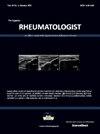Pulmonary complications in children with systemic lupus erythematosus (SLE): A review of the literature
IF 1
Q4 RHEUMATOLOGY
引用次数: 0
Abstract
Background
Pulmonary involvement affects 20–90% of children with systemic lupus erythematosus (SLE), presenting as manifestations ranging from mild pleuritis to life-threatening conditions like diffuse alveolar hemorrhage (DAH) and pulmonary hypertension (PH).
Aim of the work
This review aims to broadly explore pulmonary involvement in childhood-onset SLE (cSLE), examining the spectrum of respiratory manifestations that contribute significantly to morbidity and mortality in this vulnerable population.
Review of the literature
This review provides a comprehensive analysis of the literature with up-to-date evidence on the pathophysiology, clinical presentations, diagnostic approaches and management strategies for pulmonary complications in c-SLE. The underlying pathophysiology involves antigen–antibody complex deposition, autoantibody-driven tissue damage, endothelial dysfunction and inflammatory cytokine imbalance. Manifestations include pleuritis, acute lupus pneumonitis (ALP), and interstitial lung disease (ILD), while severe sequelae such as DAH, PH as well as shrinking lung syndrome occur less frequently but carry significant mortality risk. Diagnostic evaluation relies on high-resolution computed tomography (HRCT), pulmonary function tests (PFTs), bronchoalveolar lavage (BAL) and echocardiography. Management involves a multidisciplinary approach centered on corticosteroids and immunomodulatory agents like cyclophosphamide and mycophenolate mofetil, with biologic agents including rituximab and belimumab showing promise in refractory cases. Emerging biomarkers such as type-I interferon surrogates and B-cell activating factor-related cytokines offer potential for earlier detection. Despite advancements in understanding pulmonary complications in cSLE, significant research gaps remain regarding pediatric-specific epidemiology, treatment outcomes and prognosis. Early recognition and targeted intervention remain crucial to improving outcomes for these children, highlighting the need for continued research to optimize diagnostic and therapeutic approaches.
系统性红斑狼疮(SLE)患儿的肺部并发症:文献综述
20-90%的系统性红斑狼疮(SLE)患儿肺部受累,表现为从轻度胸膜炎到弥漫性肺泡出血(DAH)和肺动脉高压(PH)等危及生命的疾病。本综述旨在广泛探讨儿童期SLE (cSLE)的肺部累及,检查在这一易感人群中对发病率和死亡率有重要影响的呼吸系统表现谱。本综述对c-SLE肺部并发症的病理生理学、临床表现、诊断方法和管理策略等方面的最新证据进行了全面的文献分析。潜在的病理生理机制包括抗原-抗体复合物沉积、自身抗体驱动的组织损伤、内皮功能障碍和炎症细胞因子失衡。表现包括胸膜炎、急性狼疮肺炎(ALP)和间质性肺疾病(ILD),而严重的后遗症如DAH、PH和肺萎缩综合征发生率较低,但具有显著的死亡风险。诊断评估依赖于高分辨率计算机断层扫描(HRCT)、肺功能检查(PFTs)、支气管肺泡灌洗(BAL)和超声心动图。治疗涉及以皮质类固醇和免疫调节剂(如环磷酰胺和霉酚酸酯)为中心的多学科方法,包括利妥昔单抗和贝利单抗在内的生物药物在难治性病例中显示出希望。新兴的生物标志物,如i型干扰素替代品和b细胞激活因子相关细胞因子,为早期检测提供了潜力。尽管对cSLE肺部并发症的了解有所进展,但在儿科特异性流行病学、治疗结果和预后方面仍存在重大研究空白。早期识别和有针对性的干预对于改善这些儿童的预后仍然至关重要,强调需要继续研究以优化诊断和治疗方法。
本文章由计算机程序翻译,如有差异,请以英文原文为准。
求助全文
约1分钟内获得全文
求助全文

 求助内容:
求助内容: 应助结果提醒方式:
应助结果提醒方式:


